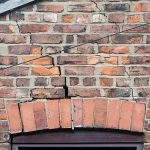It’s no secret that the weather can dramatically affect your roof and its overall lifespan. Hot summers, freezing winters, and heavy spring rains all take their toll on your roofing material, leading to wear and tear that can drastically reduce its lifespan if ignored.
Depending on the climate in your area, it is best to consult with a local roofer or roofing company about the best roofing material that would serve you better considering the weather conditions in your area.
Ways Weather Can Impact Your Roof
Sun Exposure
Constant sun exposure can cause your roofing material to degrade, leading to cracking, splitting, and other damage.
The sun’s heat and ultraviolet rays can cause your roof to age prematurely, leading to increased repairs or replacement costs. The sun can wear down shingles, causing them to fade, curl up at the edges, or even crack – making them more susceptible to water damage.
To protect against this kind of damage, you should consider installing a reflective coating on your roof that will reflect the sun’s rays away from the surface of your roof. This will help reduce any long-term damage caused by prolonged exposure to direct sunlight.
At a minimum, it’s essential to inspect your roof regularly for signs of wear and tear.
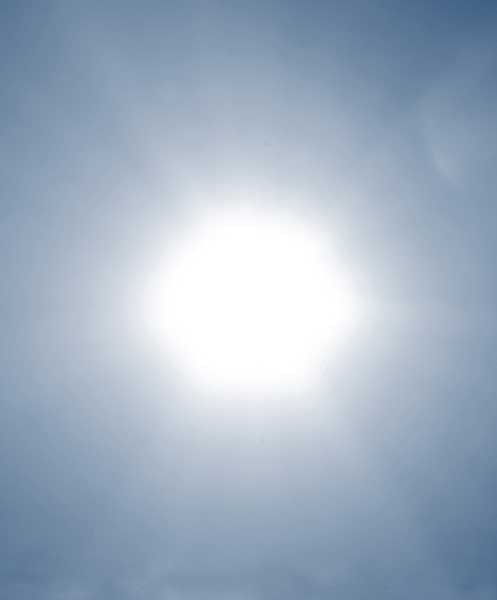
Heavy Rains
Heavy rains can also cause damage to your roof. If there is too much water weight on the shingles or areas where the water isn’t draining properly due to clogged gutters or downspouts, those areas could be at risk for leakage or even collapse.
To prevent this kind of damage from happening, make sure you keep gutters and downspouts clean so that they won’t become clogged with debris during heavy rainstorms.
Additionally, if you live in an area prone to heavy rainstorms, it may be worth investing in a waterproof sealant for extra protection against moisture damage. This will seal up any cracks or gaps in the material, preventing rainwater from seeping in and causing damage.
Inspecting any flat roofs regularly for signs of leaks or structural weakness that could potentially worsen with heavy rains is also important.
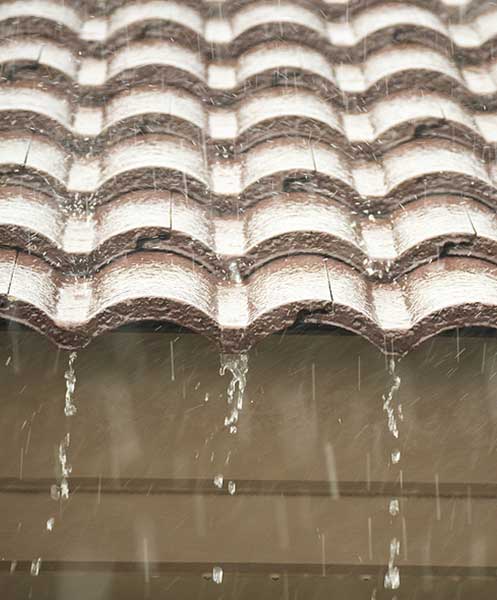
Snow and Ice
Snow may seem like a harmless form of precipitation at first glance, but it actually poses some serious risks for roofs. Heavy snowfall accumulations can add a lot of weight to your roof and strain its structure over time.
It’s vital to ensure that your roof is adequately insulated so that heat generated by the home doesn’t melt the snow into an icy slurry that could seep under shingles and cause ice damming (which leads to further damage).
To protect against this kind of damage, ensure you have a professional inspect any flat roofs for signs of ice dams forming or excessive snow accumulation that could overwhelm their load-bearing capacity over time.
You should also consider installing snow guards on steep-slope roofs if you live in an area where there is frequent snowfall so that large chunks of snow don’t slide off onto people below during storms or thaws.
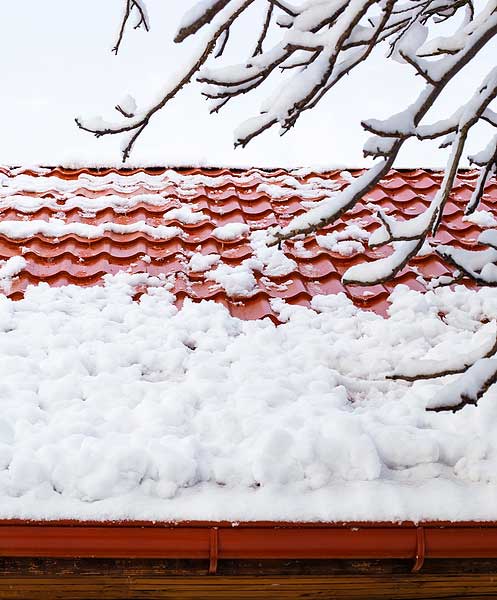
Hail Damage
Hail is one of the most destructive forms of severe weather as far as roofs are concerned.
Hailstones come in all shapes and sizes, but those larger than one-half inch in diameter are likely to be damaging.
If you suffer from hail damage on your roof, you may notice granules or chunks missing from shingles as well as random dents in metal flashing or shingles. It is also possible for hail storms to cause cracks or tears in the material of your roofing system.
You should always have an inspection done after a hailstorm to check for any hidden damage that may not be visible from the ground. That way, any areas that need attention can be repaired before more severe damage can occur.
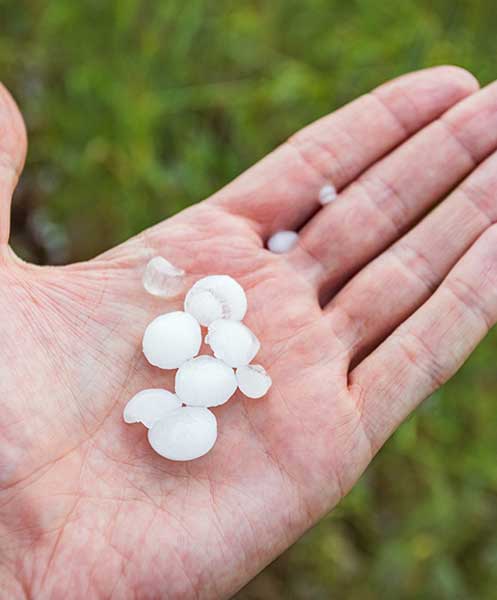
Temperature Fluctuations
Another common weather condition that can have an adverse effect on roofs is temperature fluctuations. Extreme cold and hot temperatures can cause considerable wear and tear on your roof over time.
Cold temperatures are damaging because they can cause shingles to become brittle and crack more easily than under normal conditions; likewise, extreme heat can weaken them and make them more susceptible to cracking due to thermal expansion.
Sudden temperature changes can cause expansion and contraction, leading to cracks in the roof’s surface. To prevent this from happening, make sure to use materials designed to withstand extreme temperatures.
To reduce the risk of temperature-related damage to your roof, keep it clean by removing debris such as leaves or twigs so that airflow is not blocked off. This will help regulate temperatures inside the attic space. Furthermore, consider installing an attic fan if you do not already have one; this will help keep cool air circulating during periods of extreme heat throughout the summer months.
High Winds
High winds can cause damage in a couple of ways:
High winds can lift shingles and strip them right off your roof. These types of damages often require replacement materials as opposed to repairs, so it pays for homeowners living in windy regions to invest in extra-strong products like slate tiles or metal sheets for their roofs.
It’s crucial to ensure that all parts of your roof—from gutters and downspouts to flashing and vents—are adequately secured so they won’t get dislodged during high winds.
Additionally, if you live somewhere with exceptionally high winds or in hurricane-prone areas investing in wind-resistant options may be mandatory depending on local building codes.
Winds can also blow tree branches onto your roof, penetrate the surface with sharp edges, and create punctures. To prevent this from happening, always keep your trees trimmed around the house and clear away any debris that accumulates on the roof.
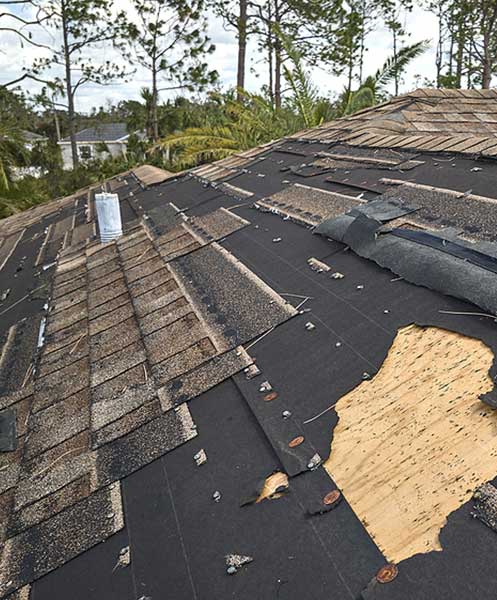
Weather and Your Roof
Awareness of these common types of weather-related damage to roofs can help you protect them against future weather events. By taking preventive measures now, you can help avoid costly repairs in the future.
With a bit of foresight and working with an experienced roofing company that understands the climate in your area, your roof will withstand much of the damage Mother Nature may throw its way.
This article is published by Ultimate Home Improvement blog uk


